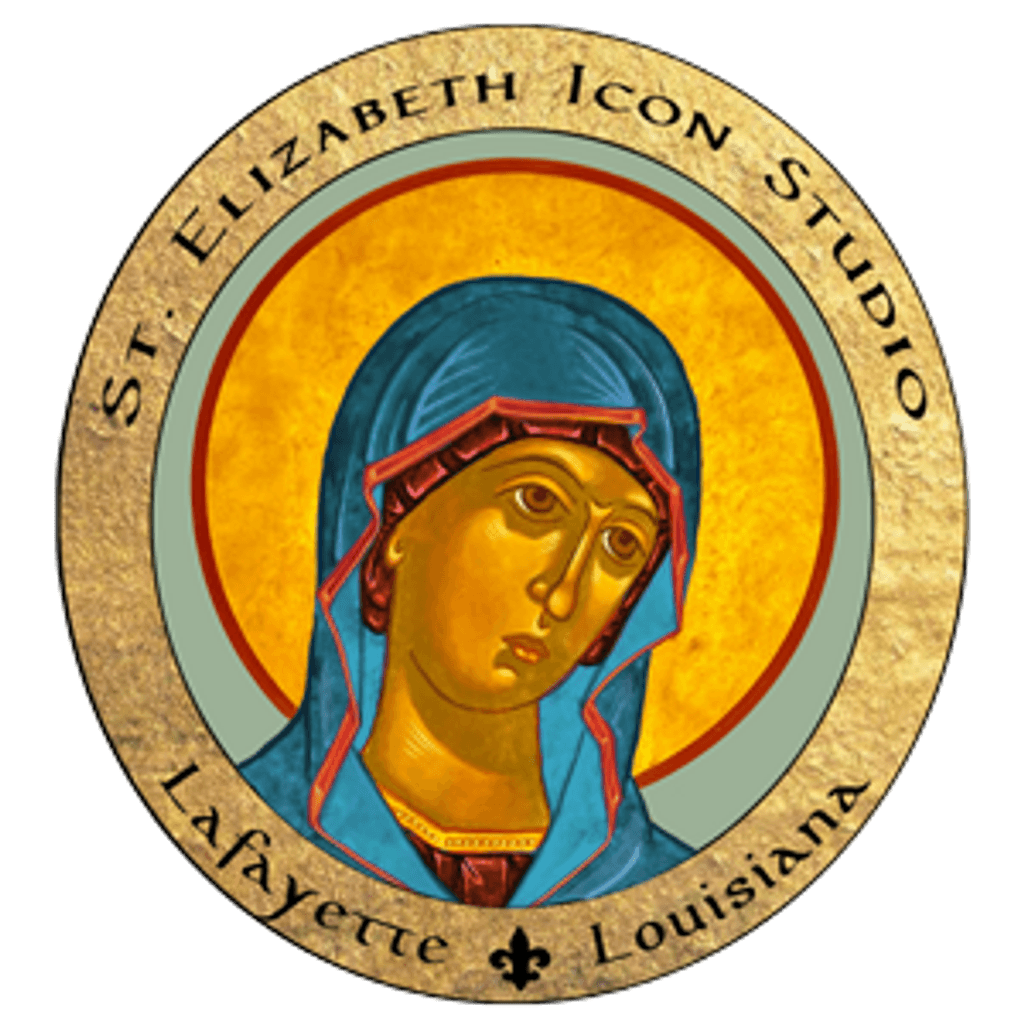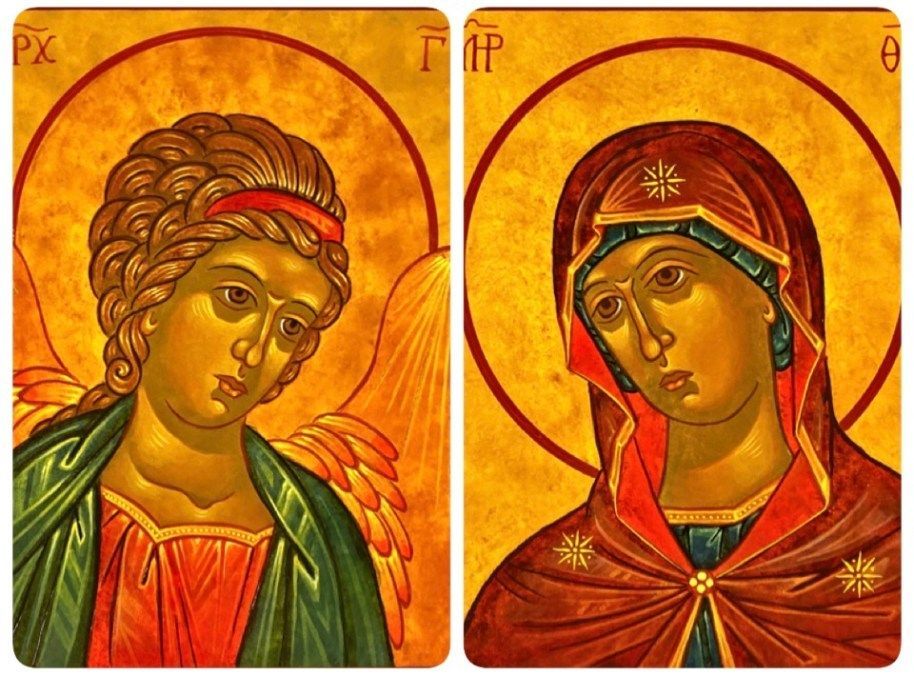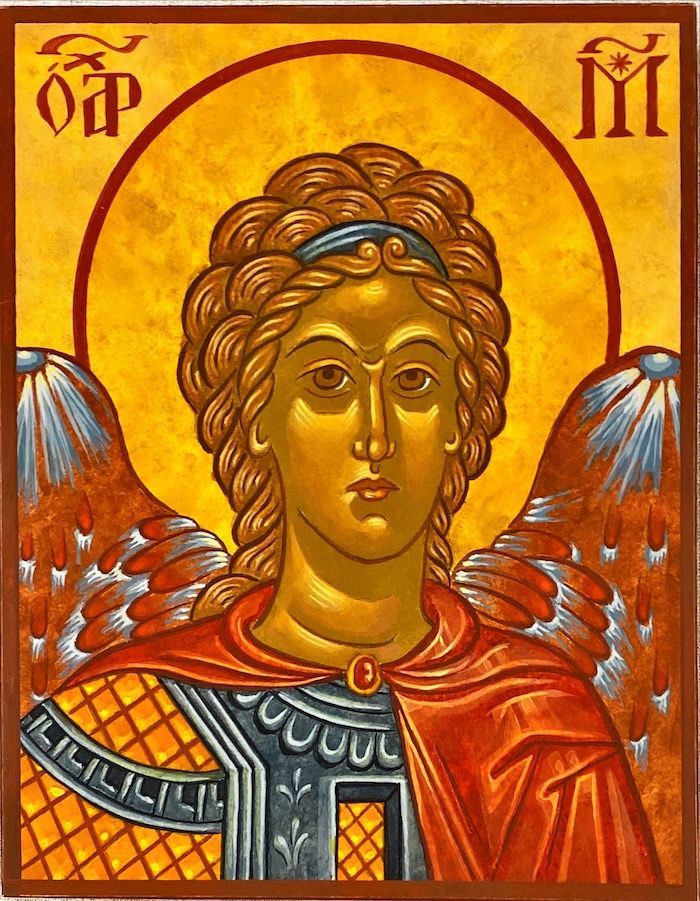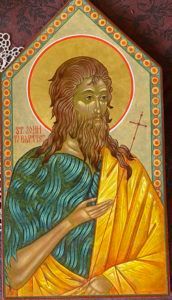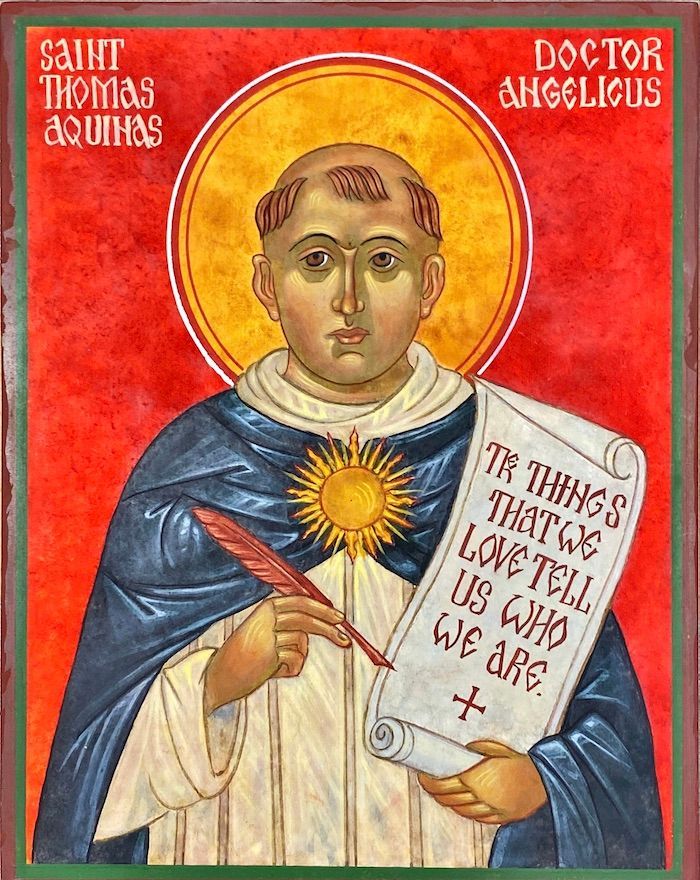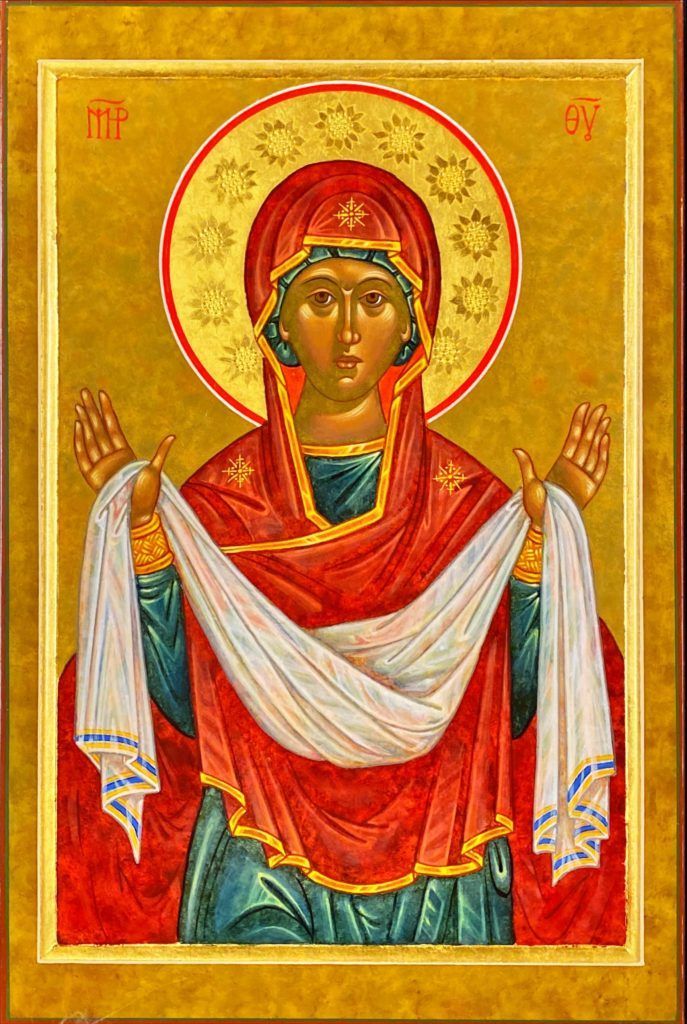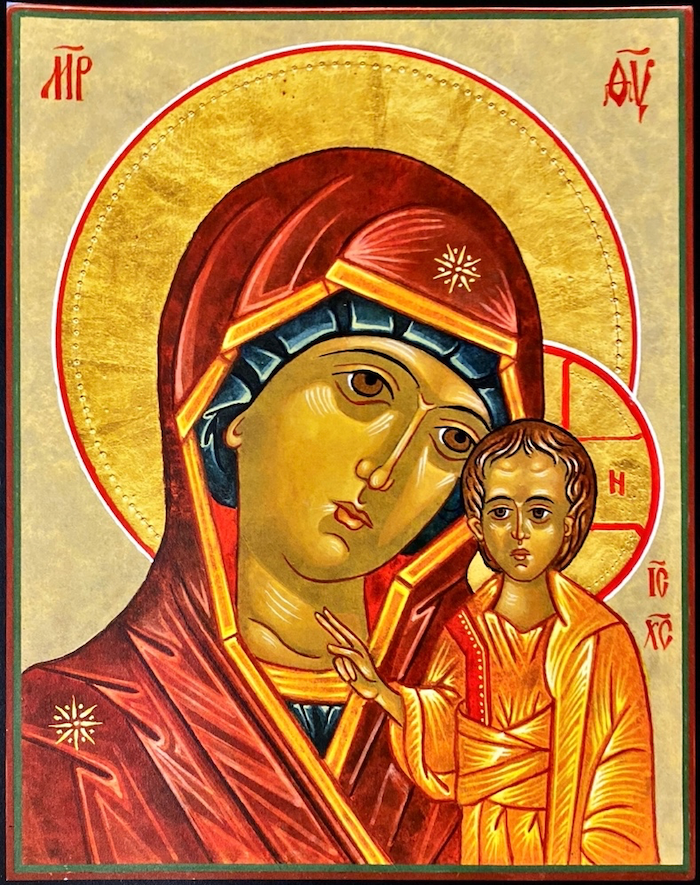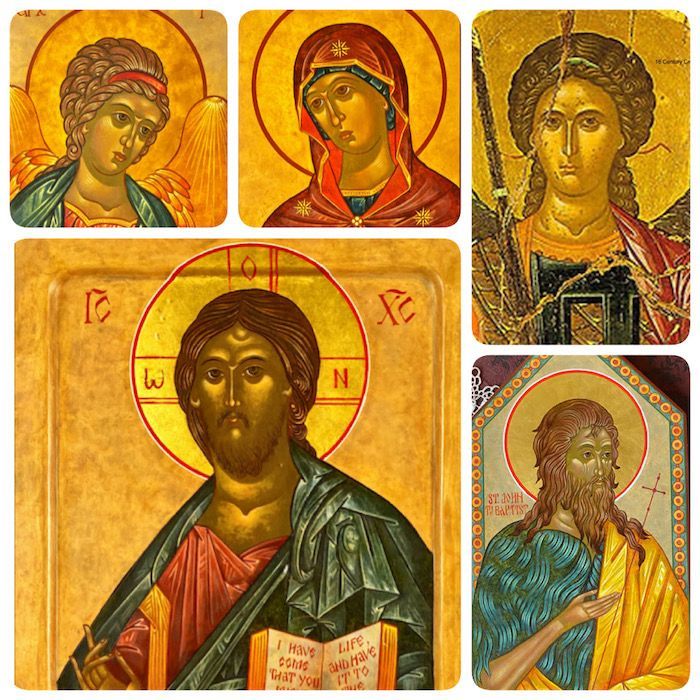St. Mary Magdalene, Apostle to the Apostles icon – Series starts July 2023 - St. Elizabeth Icon Studio
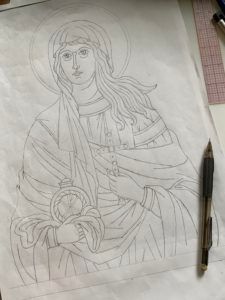
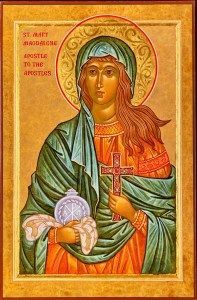
St. Mary Magdalene, Apostle to the Apostles icon – Series starts July 2023
Christian iconography is essentially the faithful transmission of the truths of the faith. The canons of the eastern Church tell us that new icons should be based on older icons when possible. In developing an icon of a saint, we first study existing iconography. Contemporary Byzantine icons should always be informed by the images of past years, as well as historical information and traditions associated with the saint. In other words, iconography is not an exercise in artistic creativity.
In studying the historic icons of Mary Magdalene, we see that the traditional colors of her garments vary. In the “Noli Me Tangere” icons, when she is pictured with Christ in the garden after the resurrection, she is usually shown in a red robe, but when pictured at the crucifixion, she is often shown in a green robe, or sometimes a red or brown robe. Likewise, her hair style varies in the old icons. In some images her hair is covered with a snood, as is typical of icons of female saints. In other images, however, her hair is long and loose, not at all common for most icons of women.
After looking at many icons, I decided to follow the written guidelines for her garments set forth in An Icon Painter’s Notebook: The Bolshakov Edition, an anthology of ancient Russian source materials from the 16th -17th centuries and earlier. It says, “The holy myrrh-bearer and equal to the apostles, Mary Magdalene has a green cloak, an ochre tunic, she holds a white container in her hand and a cross in the left.” In our icon, the green of her robe will slant toward a blue-green, and her inner ochre robe will slant toward a reddish ochre. (The class starts in July; see the Classes page for details or the registration form here.)
The Bolshakov manuel gave no indication about her hair, but its companion volume An Iconographer’s Patternbook: the Stroganov Tradition contained a drawing of Mary Magdalen with her hair loose and flowing. In Byzantine iconography a woman’s hair is usually covered with a snood as a sign of respect; it is considered disrespectful to show her hair. However, a few female saints are occasionally portrayed with various hair styles. In some historical icons Mary’s hair was covered; in others, it was not — especially in images of her at the crucifixion and in the garden after the resurrection of Christ. Why? Was this long flowing hair a sign of disrespect, or was there some deeper meaning associated with it?
Details of Mary Magdalene’s life and the exact nature of her relationship to Jesus have been lost in history. Many legends have risen about her, and most of these have no factual evidence to support them. One legend that has risen at various times in history is that Mary Magdalene and Jesus married and had children who became the forerunners of some of the European royal houses. This legend has been totally debunked — there is no foundation for it at all. But even in modern times this myth has served as the basis of such fictional works as The DaVinci Code.
Another false belief, more widely accepted in the Roman Catholic Church even today, is that Mary Magdalene was a prostitute. Its origin has been traced back to the 6th-century Roman pontiff Pope Gregory the Great’s sermon in 594. It was not until 1969 that the Catholic church retracted this teaching. Therefore, we see many images of Mary Magdalene dressed in red, weeping profusely as a penitent sinful lustful woman, in the western artwork of the Middle Ages. However, this false myth was never embraced by the eastern Christian churches, which always held Mary Magdalene in high respect and referred to her as equal to the apostles. Her iconography in the eastern churches is not that of a prostitute, and there is no evidence that her revealed hair was any indication of disrespect.
So why is Mary Magdalene sometimes portrayed with long, uncovered hair? The answer to this question may be revealed in an incident from Scripture that occurred at Bethany shortly before Jesus’ death, an incident that many Scripture scholars ascribe to Mary Magdalene. All four Gospels (Matt 26:6-13, Mark 14:3-9, Luke 7:36-50, John 12:1-8) tell us that Jesus was at supper with friends, and a woman anointed his feet and/or head with expensive oil — bathing his feet with her tears, anointing them with costly oil, and drying them with her hair. When the apostles criticized the extravagance of this action, Jesus reprimanded them, telling them that this anointing was in preparation for his death and that what she had done should be told in remembrance of her. Perhaps the long flowing hair of Mary Magdalene is silent witness to these actions, the hair that dried the feet of the Lord testifying to the great love she had for him and prefiguring his approaching death. In our icon, Mary will have long flowing hair.
There is a custom in Byzantine iconography that all martyrs are shown holding a cross. The Bolshakov manual tells us that Mary Magdalene should be painted holding a cross, but to the best of our knowledge, she was not a martyr. Why then a cross for her? Again, we are informed by Scripture. The Gospels specifically name Mary Magdalene being present at the crucifixion. She stood with a group of women near (or at a distance from) the cross throughout Jesus’ agony and his death. As the old hymn says, she was there when they crucified the Lord. For this reason, the ancient iconographic guidelines indicate that Mary Magdalene holds a cross—not because she was a martyr, but because she was at the cross when Jesus died. She lived the reality of the crucifixion, and the cross she holds in her images testifies to this.
The Gospels also tell us that she and other women went to the tomb early in the morning after the Sabbath to anoint the body of Jesus with spices—the myrrh-bearing women. There they discovered the empty tomb. This is reflected in most Byzantine images of Mary Magdalene by her being shown holding some sort of container with spices in it for the anointing of the dead.
Finally, all four Gospels identify her by name as the first witness to the resurrection. It was she who first saw the risen Lord. Most of the gospels add that after the resurrection she is specifically told by Jesus to go and tell the other apostles that He is risen—hence her title, Apostle to the Apostles. Our icon will carry this title along with her name. It is an ancient title for her, recognized by all the Christian churches in both the east and the west.
St. Mary Magdalene, Apostle to the Apostles, pray for us who paint this image in remembrance of you!

